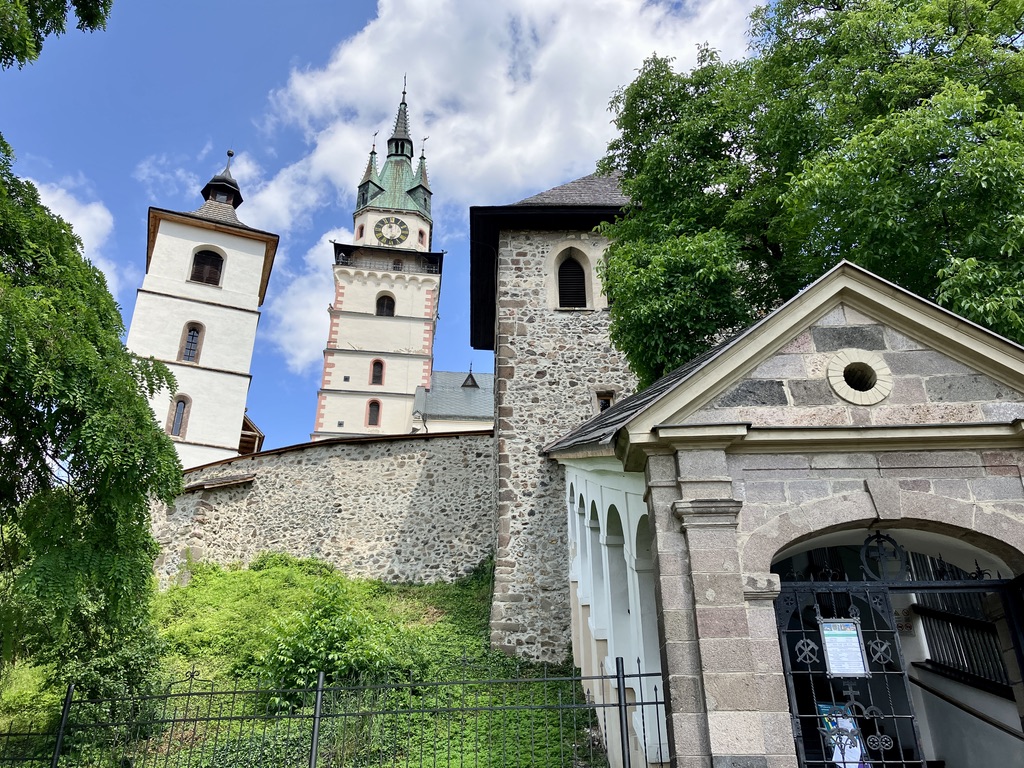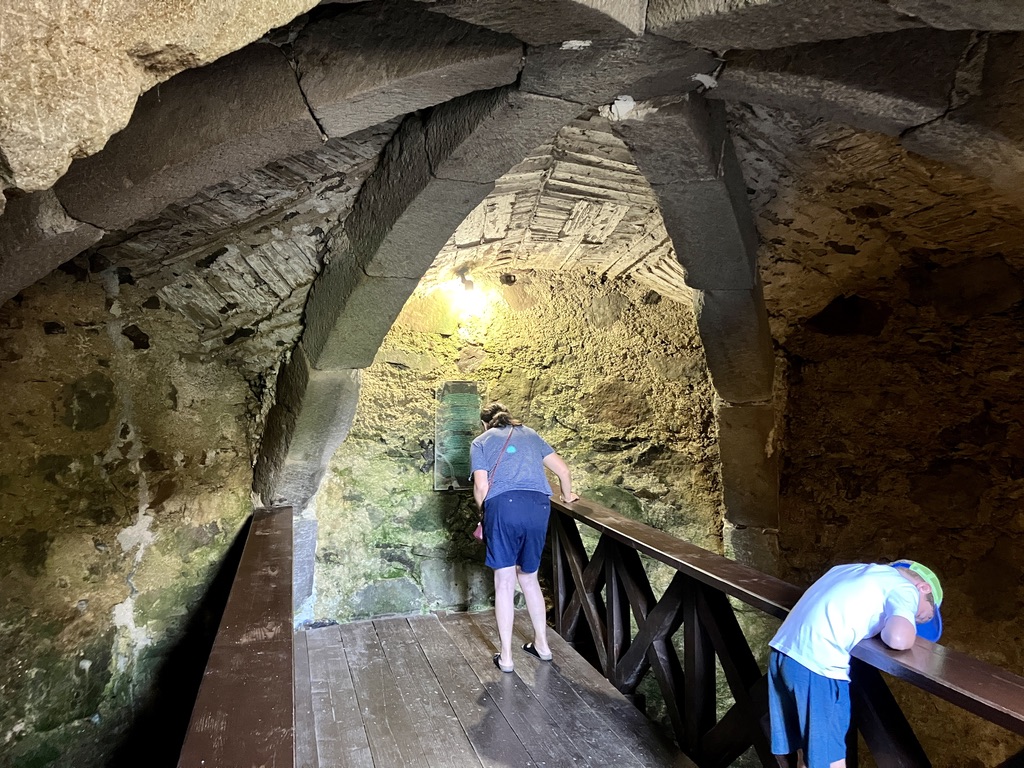We're back in the US as I write this, and while it does feel nice to be back in the comfort of our own home (and sleeping in our own beds), I always get a little bummed out about returning to the States. In so many ways, I feel like I'm done with California. Don't get me wrong, there are many things about the Bay Area and California that I love and will never stop loving. But we feel that it's increasingly difficult to imagine a future here, since, unless there is some crazy economic catastrophe, we'll never be able to afford to buy a house here in the Bay. When modest two-bedroom houses average at $1.3 million, just getting the 20% down payment together for the mortgage would be impossible without other help, and would completely wipe out our savings. Then we'd probably never be able to travel abroad because we'd be so stretched financially making those monthly mortgage payments.
 |
| Sitting down to do a puzzle at the Halič castle cafe. |
Slovakia has many flaws, and might be on the verge of electing a Russia-loving, socially conservative, openly racist, highly corrupt government (I hope I'm wrong!), but it's in Europe (and the EU), it's close to myriad places and things that we love in Europe, and it's still infinitely more affordable to buy a modest home or flat there than it ever will be in California.
The problem is that Terezia's line of work as a personal chef is just not valued nearly as highly in Slovakia as it is in California, and she would either have to take a significant pay cut, or figure out some other way to apply her talents that could bring in a meaningful income.
The trip went well, for the most part, though we lost several days to people being sick. Simon had mild cold symptoms for a couple of days, but it was really nothing in the end, and cleared up quite quickly. Still, we didn't want to push him, so we scaled back and/or altered our plans considerably in those two days to make sure he could get better. Then Terezia got hit with a cold that forced her (and Simon) to leave Bratislava a day earlier than planned, and curtailed what we would've done later that week.
 |
| Waiting for coffee and hot chocolate at Halič castle. |
That meant tentatively planned trips to Banská Štiavnica, Košice, and elsewhere were canceled. That also meant more time spent in the village of Podrečany, which is relaxing in a way, but still gets to be mind-numbing and tedious.
I mentioned in an earlier post that a planned trip to Prague was canceled, though that was scrapped more because Terezia's mom was not feeling so hot, plus there was an awful heatwave forecast for that block of time, which would be awful for exploring a city. Also, Simon is still a little too young to fully appreciate a city like Prague anyhow—we'd have spent an inordinate amount of time checking out local playgrounds. I think we need to start with a more modest one-night trip to a place like Košice and see how that goes.
 |
| Simon is really excited to get some hot chocolate at Halič castle. |
But we would also very much like to go down to the Croatian coast. (Recall that we went down to the Croatian coast way back in 2013.) That's the kind of trip that would be Simon-friendly, since it would involve a lot of time outdoors at the beach and swimming in the sea, which Simon loves. L'udka and Chris take their family to the Croatian coast reliably every summer, and we talked about the possibility of going with them next time (they were really encouraging us to do it). Either way, I want to be proactive about doing more next time.
This was also our first
trip there during the summer, and the awful, nasty, humid heat is definitely
something you have to contend with. You have to be flexible, because
a heatwave could easily derail your plans. It also rains kind of a lot—the intense heat inevitably brings thunderstorms in this region, which can also put a wrinkle in your plans.
Simon and Village Life
One really nice aspect to this visit was that Simon made a friend with Mirko down the street, whom I mentioned earlier. Simon spent a lot of time playing with Mirko in the afternoons, and this meant we could just let him do his thing and not have to constantly work to keep him engaged or involved in some activity or other. But a wonderful advantage of just being in a small village was that it allowed Simon to have a degree of independence that he'd never be able to have at this age back in Oakland.
For example, many times in the afternoon, Simon would walk by himself down Terezia's mom's street to the small playground at the other end, and sit on the swing and wait for Mirko to appear. Terezia's mom also lives on a perfectly flat, straight, well-paved dead-end street with very little car traffic, which allowed Simon and Mirko (and other kids) to ride up and down it on their bikes and scooters. We would still keep an eye on him and check in on him periodically, but this kind of independence is awesome for Simon to experience, yet there's no way we could do it even in our mellow neighborhood in Oakland. This reminded Terezia and I both of how we grew up in places where you could do this. You'd step outside, and bam—kids your age suddenly materialize, and you play and ride bikes all afternoon.
It was also great to see Simon continuing to connect with his cousins Tea and Sasha. Simon and Tea both have loads of energy, and when they get together, they are loud, silly, and chaotic. It can sound a bit alarming at first, but then when you check in on them to see what all the commotion is, most of the time, they're not doing anything bad—they're just going bonkers together.
Sasha is mellower, and when Simon interacts with her, the energy level goes down a few notches. Sasha's younger sister Zuzka is a bit more chaotic, so if she's with them, that takes the commotion back up a bit.
Simon wasn't as interested in "farm work" this time as he was last time, but he was still excited about a few things, like pulling potatoes out of the ground (with his bare hands!) and helping to mow the grass.
At any rate, that's another trip under our belts. I wish I had more exciting things to report, but I suppose we'll just have to be more focused on making more things happen on the next trip.












































































